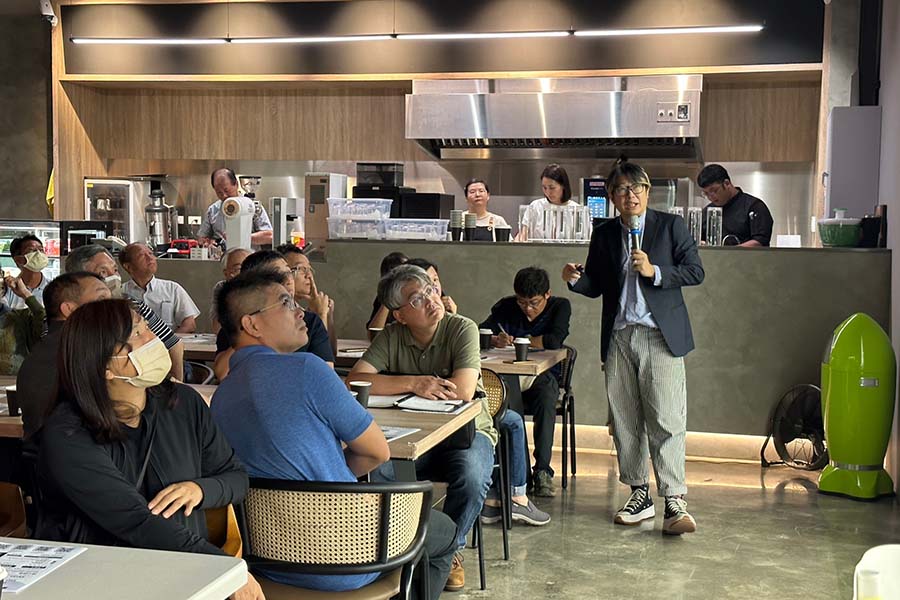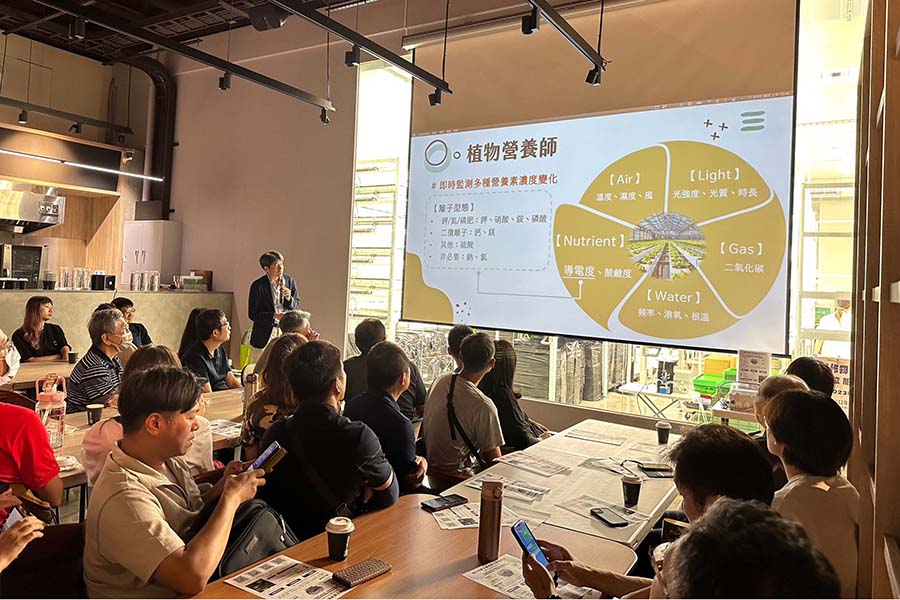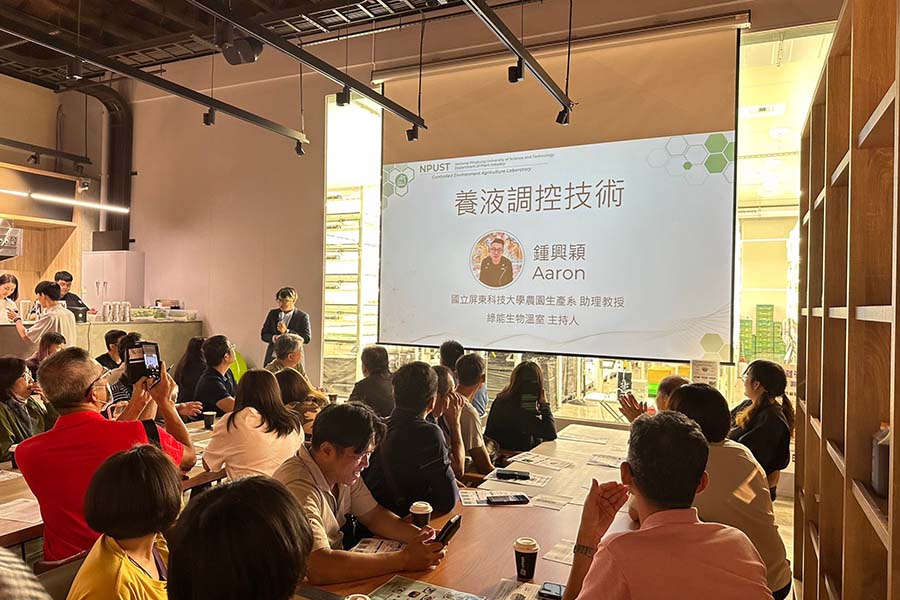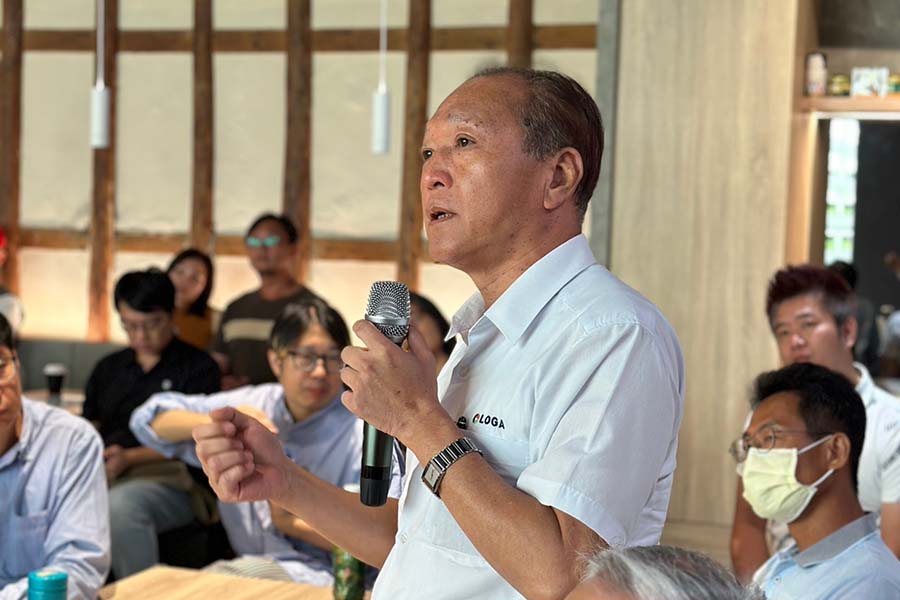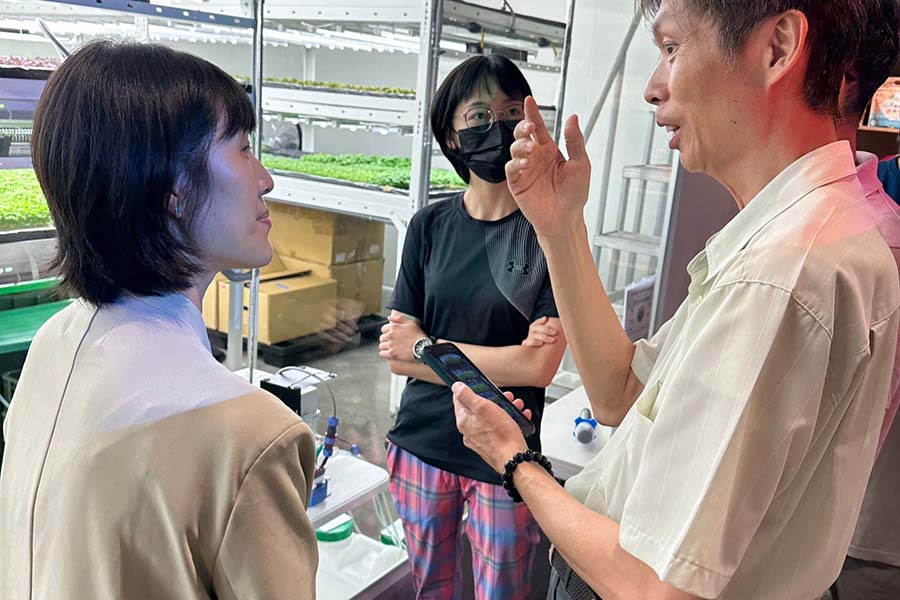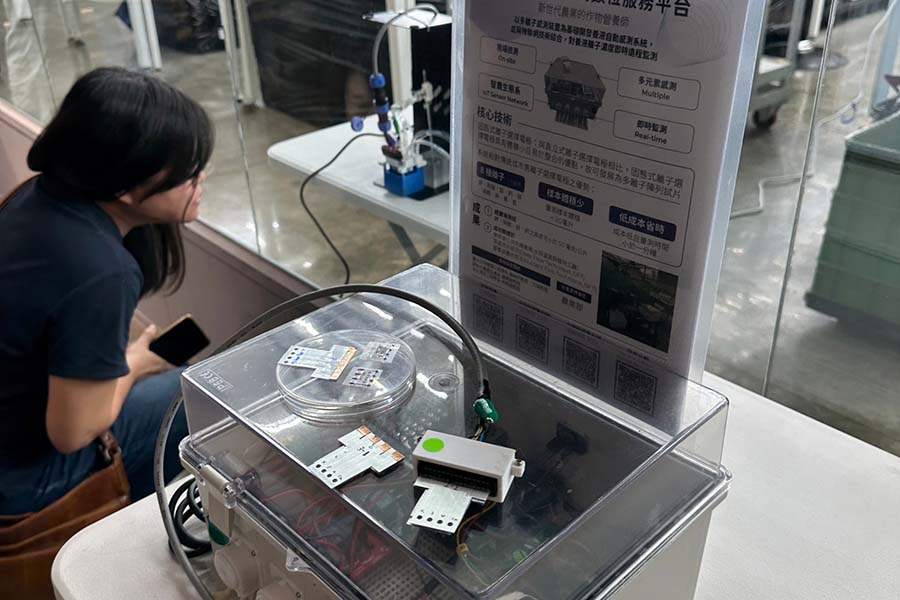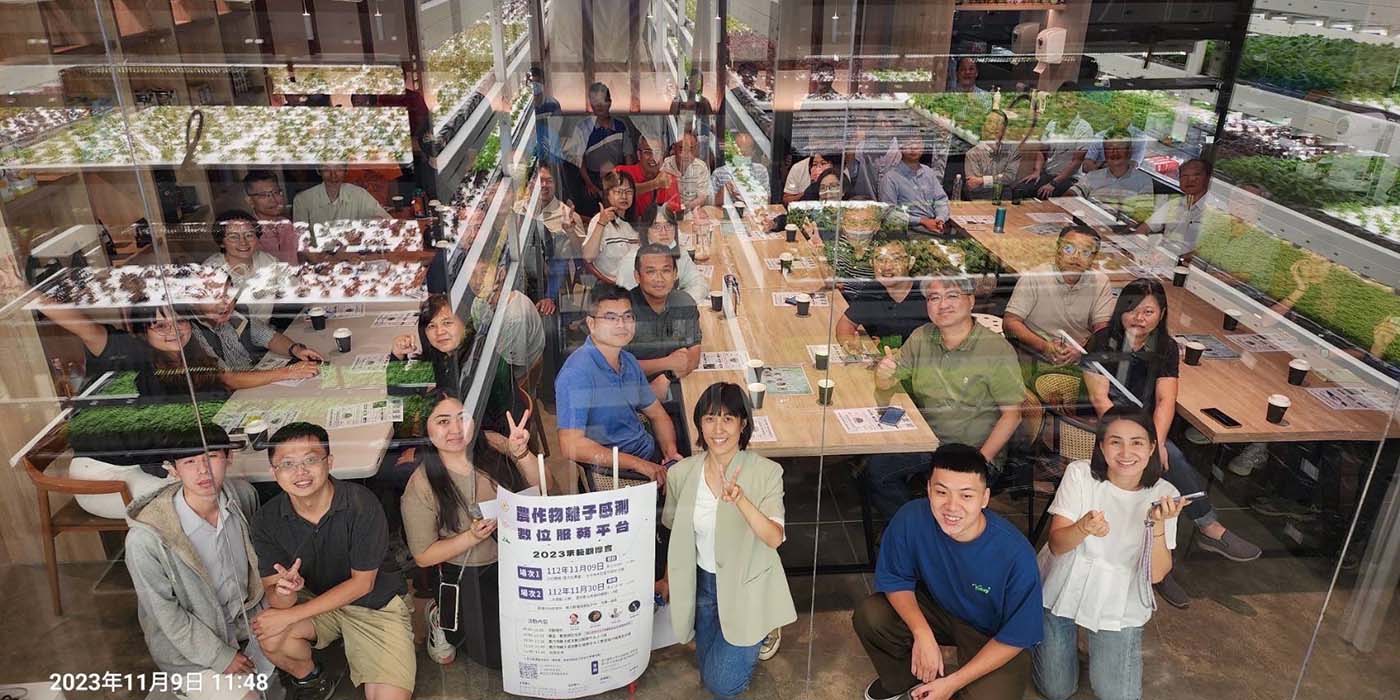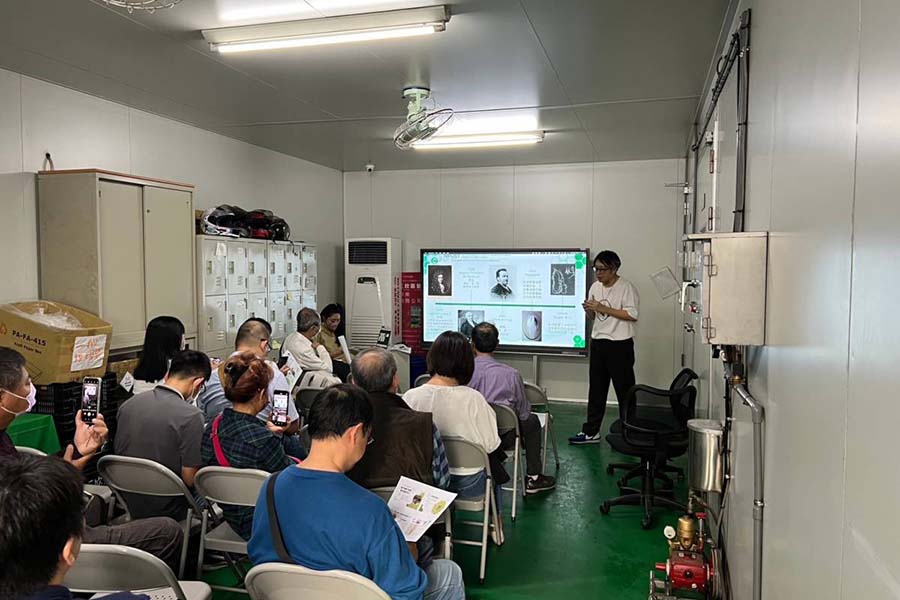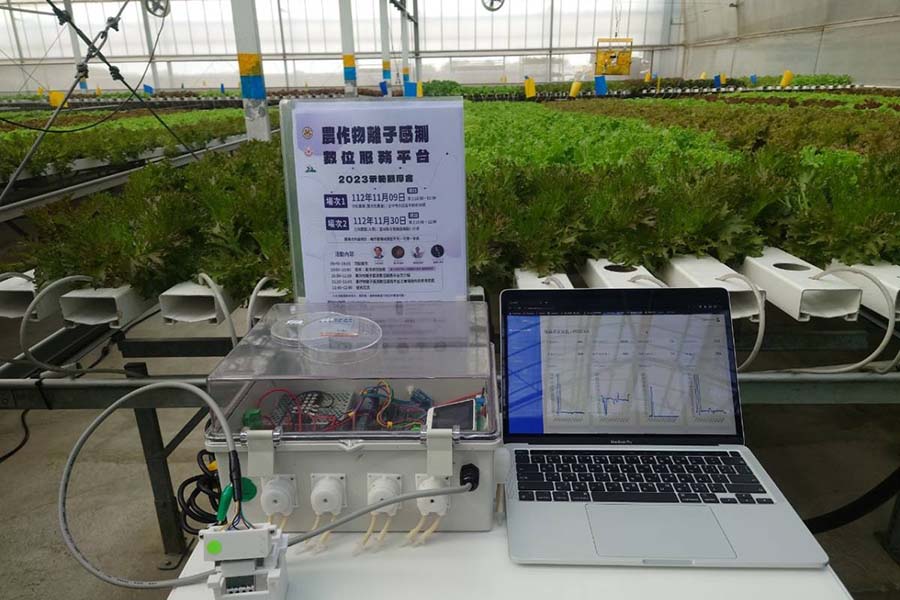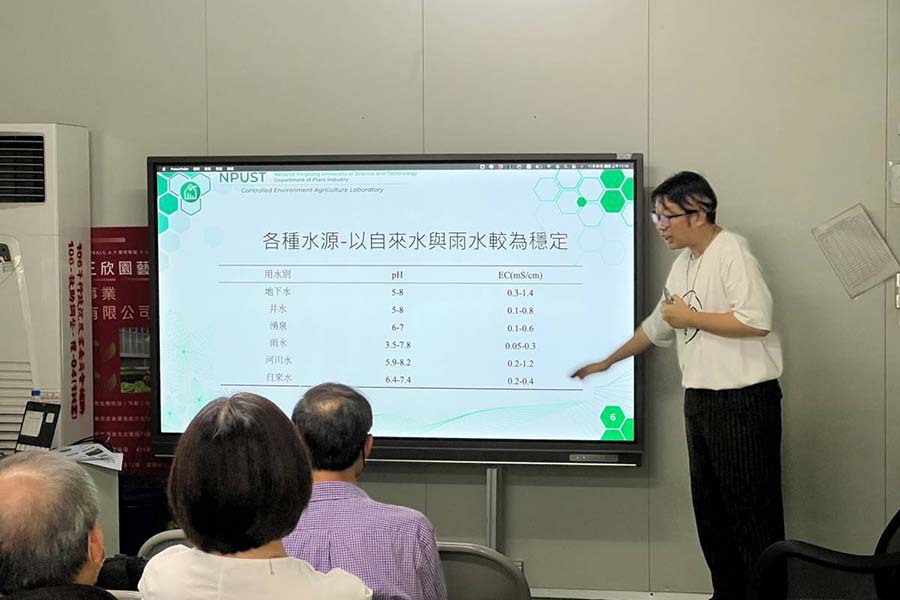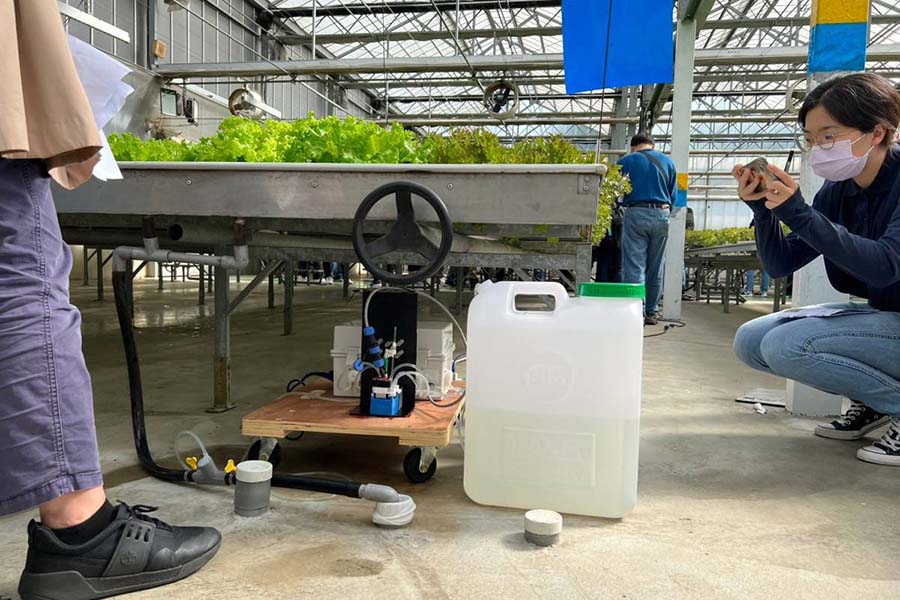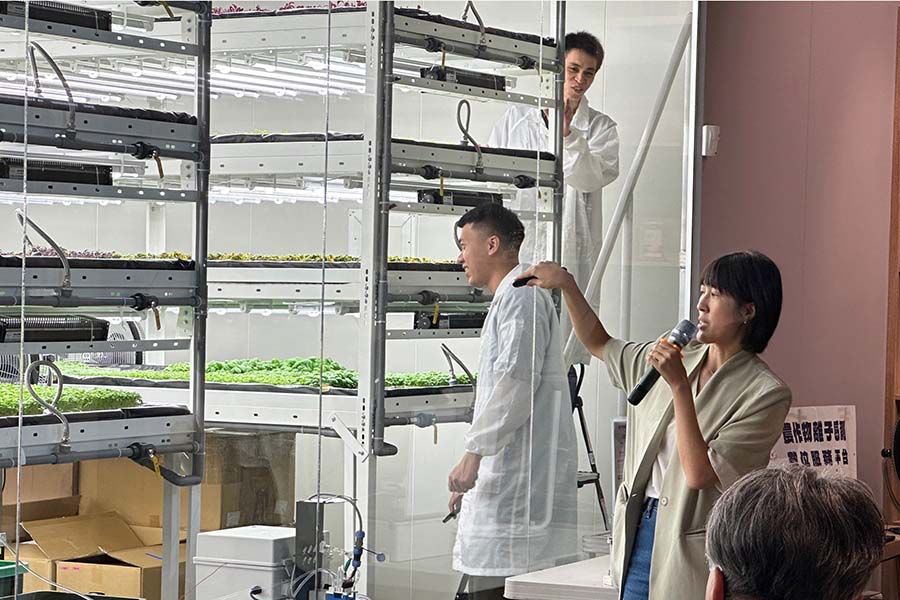An inter-institutional, interdisciplinary team of researchers has been created to develop technological tools of innovation for agricultural production. The team was brought together by National Pingtung University of Science and Technology (NPUST) Department of Plant Industry Assistant Professor Hsing-Ying Chun, NPUST General Research Service Center Researcher Wan-Lin Cheng, National Taiwan University (NTU) Department of Biomechatronics Engineering Professor Lin-Chi Chen, and Tamkang University Department of Computer Science and Information Engineering Professor Chi-Yi Lin.
Together, they have developed a “Crop Ion Sensing Digital Service Platform” which provides real-time multi-ion concentration data to help growers understand the effects and absorption of different nutrients to achieve optimal growth, increase yield, and improve crop quality. The team worked together with hydroponic vegetable cultivation operators, “Salad Farm” and “Sunsing Gardening”, so that they could apply their research results to real-world operations. In order to demonstrate the technology, two separate activities were held, on November 9th November 30th, respectively. This smart technology is currently installed at the NPUST Green Energy Greenhouse where it is used for teaching and research and purposes.
Assistant Professor Hsing-Ying Chun of NPUST said that “current hydroponic culture solutions are mainly based on electrical conductivity (EC) and pH (pH), but real-time multi-ion measurements are lacking. To solve this problem, we needed a tool that could accurately measure the concentration of multiple ions in order establish precise nutritional guidelines.”
National Taiwan University (NTU) Department of Biomechatronics Engineering Professor Lin-Chi Chen explained that “the key to our system lies in the solid-state ion-selective electrode test strip. Through the cross-domain integration of our team, we were able achieve remote automatic monitoring of 8 ion concentrations at the same time. The team is proud of this.”
The two demonstration sessions attracted around 120 people from industry, government, academia and research hoping to learn more about the system.

